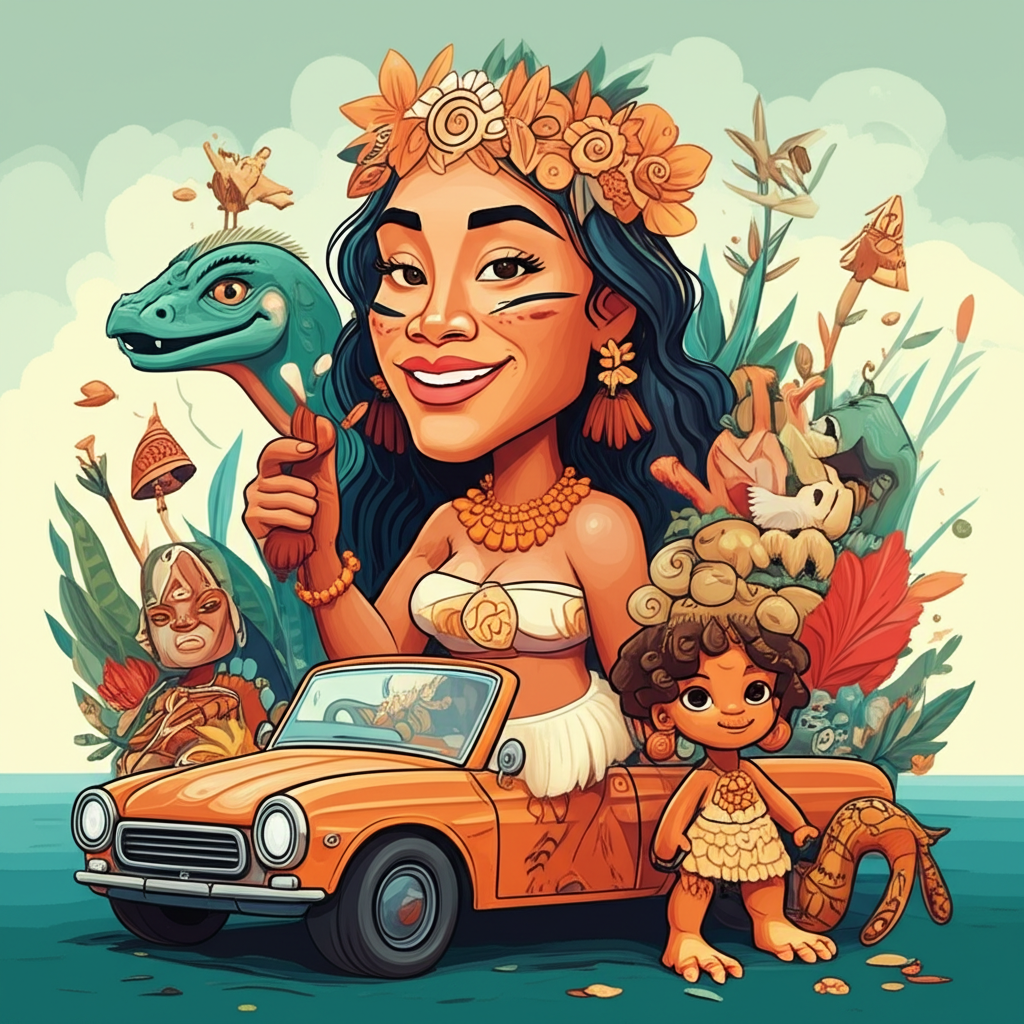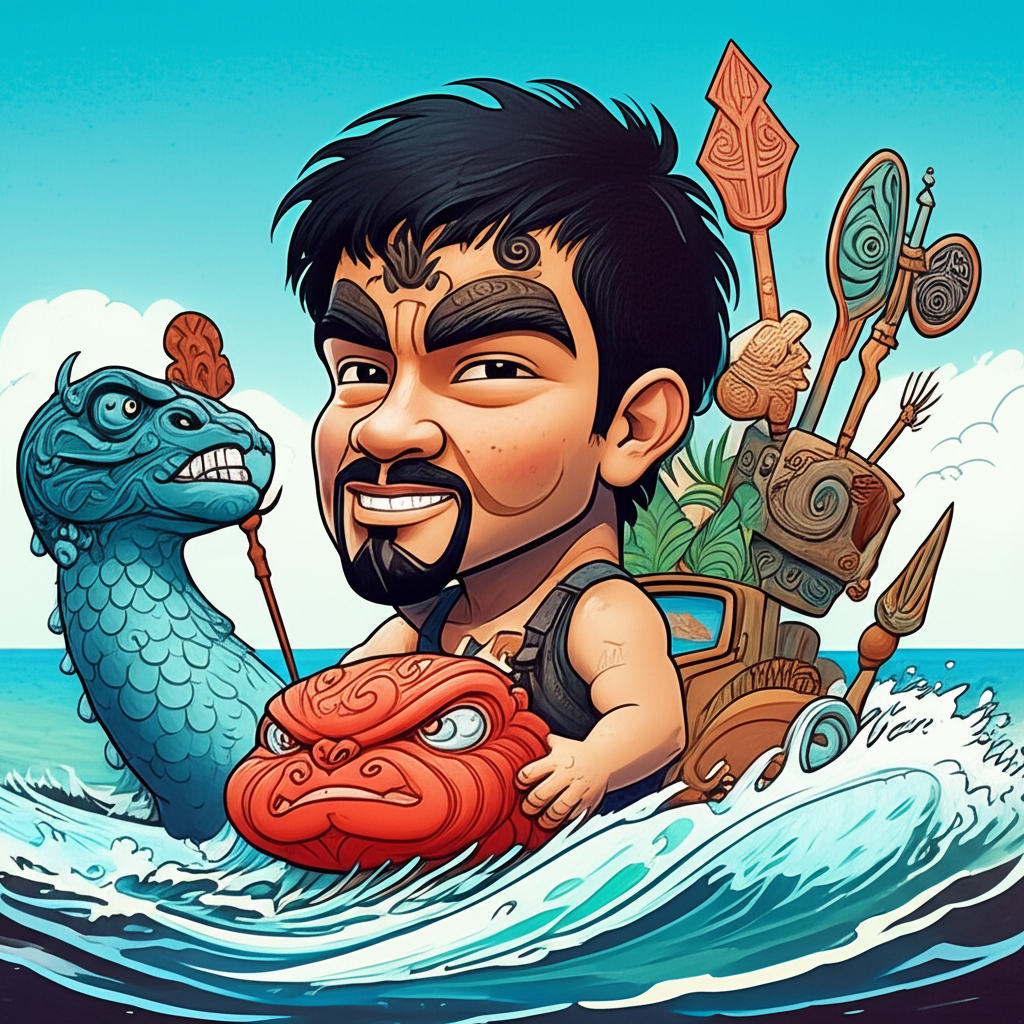
Origins and Cultural Background
Imagine Samoa centuries ago, a time before colonial ships breached the horizon, when life was intricately bound to the rhythm of the tides, the bounty of the land, and the vast, mysterious ocean. In this era, the Samoan people lived in close-knit villages, their days marked by fishing, farming, intricate craftsmanship, and communal celebrations. Their worldview was holistic and animistic; they perceived the world as a living entity, imbued with spirits, deities, and ancestral presences. Every rock, tree, wave, and creature held a potential mana, a spiritual power. The cosmos was not distant but immediate, with gods and demigods interacting directly with humanity, shaping landscapes, dictating weather, and influencing destiny. Oral tradition was the primary vehicle for knowledge, history, and wisdom, with master storytellers safeguarding these narratives, ensuring their vibrant continuation through time, offering moral guidance, explanations for natural phenomena, and a deep connection to their heritage.
Character and Creature Description
At the heart of this particular Samoan narrative are two powerful archetypes: Hina and the Mo’o. Hina, a figure resonant throughout Polynesian mythologies, often embodies the essence of feminine power, artistry, and the moon’s gentle yet profound influence. In Samoan lore, she might be depicted as a beautiful, wise demigoddess, a patroness of women’s crafts like tapa cloth making, or a bringer of light and balance. Her symbolic attributes speak to creativity, celestial wisdom, and a nurturing strength that can pacify or guide. She is not a deity in the monotheistic sense, but a powerful entity within their traditional cosmology, representing aspects of the natural world and human experience.
The Mo’o, on the other hand, is a formidable presence—a gigantic, ancient lizard or reptilian spirit. Unlike the small, skittering geckos common to the islands, the mythical Mo’o is a creature of immense scale and power, often associated with specific places: a sacred pool, a hidden cave, or a volcanic vent. Mo’o can be guardians of precious resources, shapeshifters, or destructive forces embodying the raw, untamed aspects of nature. Their symbolic attributes include primordial strength, territoriality, the unpredictable dangers of the wild, and the deep, ancient mysteries of the earth. They are not simply animals but elemental beings, capable of great good or great harm, reflecting the reverence and trepidation with which ancient Samoans viewed the powerful, often perilous, natural world around them.
Main Story / Narrative Retelling
The legend unfolds on the isle of Savai’i, where dense rainforest met black volcanic rock and the ocean’s roar was a constant companion. For generations, the people of a small, thriving village nestled near the coast had coexisted with a magnificent, ancient Mo’o. This Mo’o, known as Fetu’ali’i, was the revered, albeit fearsome, guardian of the sacred freshwater spring that welled up from the heart of the earth, providing life-sustaining water to the community. Fetu’ali’i was immense, with scales the color of polished obsidian and eyes that glowed with an ancient fire, deep within the shadows of its cave. As long as the villagers offered their respectful tributes—the first fruits of their harvest, a beautifully woven mat—Fetu’ali’i remained dormant, a silent, watchful protector.
But a season of unprecedented drought descended upon Savai’i. The sun beat down relentlessly, scorching the land, and the sacred spring, for the first time in living memory, began to dwindle. Panic spread through the village as their lifeblood threatened to disappear. In their desperation, some young, impetuous warriors, disregarding ancient custom, ventured into Fetu’ali’i’s cave, demanding the Mo’o release more water. Their audacity awoke a slumbering wrath. Fetu’ali’i, sensing disrespect and a violation of its sacred trust, coiled its massive body, its rumbling growl shaking the very foundations of the earth. It blocked the spring entirely, its fury manifest in the drying land and the growing despair.
It was then that the elders, remembering tales of old, called upon Hina. Hina, who often journeyed on the moonbeams, heard their desperate pleas from her celestial perch. Descending softly, her form luminous, she approached the troubled village. Unlike the warriors, Hina understood that force would only provoke the ancient Mo’o further. She moved with grace and a profound understanding of the natural order. Approaching Fetu’ali’i’s cave, she did not challenge it with weapons or threats. Instead, she sat at the mouth of the cavern, and began to sing.
Her voice, it is said, was like the gentle lapping of waves on a moonlit shore, a melody woven from starlight and the rustling of palm fronds. It spoke not of demands, but of the interconnectedness of all life, of the sorrow of the parched earth, and the sacred balance that had been disturbed. She sang of the Mo’o’s ancient role as a protector, of the reverence it once commanded, and of the shared need for the spring’s life-giving waters.
Slowly, Fetu’ali’i stirred. The immense creature, initially resistant, found its ancient heart touched by Hina’s pure, resonant song. The fury that had driven it to hoard the spring began to recede, replaced by a deep, melancholic understanding. Hina’s song was not a plea for submission, but an invitation to restore harmony. As her voice soared and dipped, the Mo’o’s obsidian scales seemed to soften, and its fiery eyes dimmed to a reflective glow. Finally, with a sigh that stirred the dust of ages, Fetu’ali’i uncoiled its body, moving away from the spring’s source. A trickle, then a gush, of clear, cool water burst forth, flowing once more into the thirsty land. Hina, with a final, gentle nod, ascended back into the night sky, leaving behind not just flowing water, but a renewed understanding of respect, balance, and the profound power of empathy.
Symbolism and Meaning
To the ancient Samoans, the legend of Hina and the Mo’o was far more than an entertaining story; it was a profound metaphorical tapestry. Hina, with her gentle yet potent intervention, symbolized wisdom, diplomacy, and the feminine principle of nurturing and restoration. She represented the power of understanding and respect over brute force, and the idea that even the most formidable challenges could be overcome through empathy and seeking balance. The Mo’o, Fetu’ali’i, embodied the wild, untamed aspects of nature – its immense power, its territoriality, and its capacity for both protection and destruction. Its rage at the villagers’ disrespect mirrored humanity’s potential for hubris and the consequences of disregarding natural laws or sacred customs. The drought itself could be seen as a metaphor for environmental imbalance, a warning against human greed or shortsightedness. Ultimately, the myth taught the vital lesson of humility, the interconnectedness of all living things, and the paramount importance of living in harmony with the natural world, respecting its inherent power and sacredness to ensure communal survival and prosperity.
Modern Perspective
Today, the "Echoes of Hina and the Mo’o" continues to resonate, not as literal truth, but as a cherished component of Samoan cultural identity. It is interpreted in modern literature, art, and educational programs as a powerful allegory for environmental stewardship and the preservation of indigenous wisdom. While not depicted in mainstream global movies or games as widely as some other mythologies, within Samoa and the broader Polynesian diaspora, these stories are vital for cultural continuity. They inspire contemporary artists, poets, and storytellers, offering a link to ancestral ways of thinking and providing frameworks for understanding modern challenges, particularly concerning ecological balance and the responsible use of natural resources. These narratives are celebrated as unique expressions of a rich heritage, fostering a sense of pride and connection to the land and its ancient guardians.
Conclusion
As we delve into narratives like the "Echoes of Hina and the Mo’o," it is crucial to remember that these are cultural stories, products of human imagination and interpretation of the world from a specific historical and geographical context. They are not meant to be believed as factual accounts or worshipped as divine powers. As Muslims, we recognize that Allah (God) alone is the true Creator and Sustainer of the universe, the One without partners or equals, and that all power and dominion belong solely to Him. These ancient tales, therefore, serve as invaluable windows into the human experience, reflecting a people’s spiritual inclinations, their moral compass, and their attempts to make sense of a complex world. They are a profound part of our global cultural heritage, demonstrating the universal human impulse to explain, to teach, and to connect through the enduring magic of storytelling. They remind us of the power of imagination and the rich tapestry of human tradition that continues to echo through the ages.





